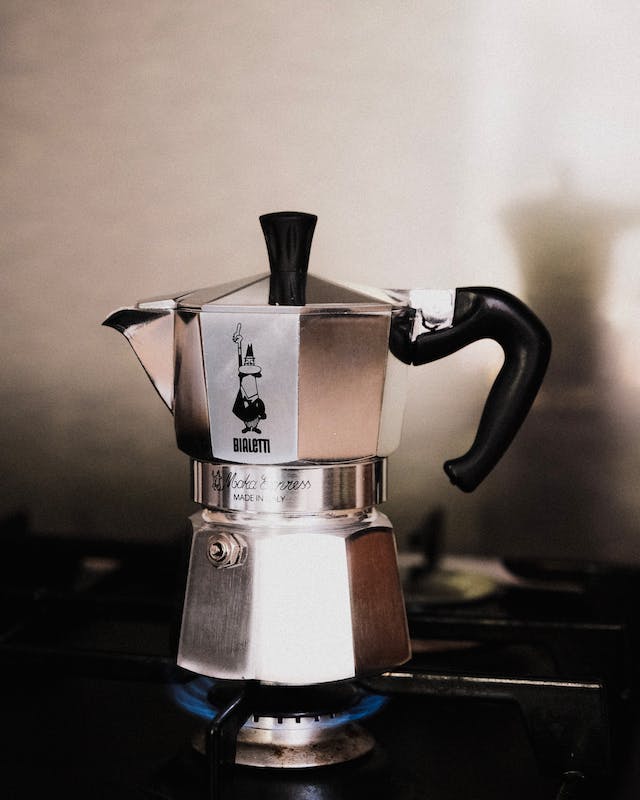The Ultimate Guide to Making Turkish Coffee: A Step-by-Step Journey
Turkish coffee is not just a beverage; it’s an experience. Revered for its strong flavor, unique preparation, and cultural significance, learning how to brew it the traditional way is a journey worth embarking on. Whether you’re a coffee aficionado or a curious novice, this guide will take you through the intricate steps to make Turkish coffee with a cezve (or ibrik), ensuring you get that authentic taste and texture right in your home. Every detail matters, from selecting the right grind to serving it with the perfect foam. Dive in to master the art of Turkish coffee making and discover why this age-old tradition continues to captivate coffee lovers around the globe.
FTC: This post may contain affiliate links, and I may earn a small commission when you click on the links at no additional cost to you. As an Amazon/ShareASale Affiliate, I earn from qualifying purchases. You can read my full disclaimer here.
What Is Turkish Coffee?
Turkish coffee refers to a method of coffee preparation that dates back centuries, originating in the Middle East. It involves brewing very finely ground coffee beans in a cezve or ibrik with water and sugar, if desired, to create a rich, intense, and foamy cup of coffee. This method is unique because the coffee grounds are not filtered out, settling at the bottom of the cup, which contributes to its strong flavor and thick body.
Selecting the Right Coffee Beans and Grind
The choice of coffee beans and the grind size are crucial for making authentic Turkish coffee. Traditionally, a medium to dark roast is preferred to achieve a rich flavor profile. To ensure the coffee’s distinctive texture, the beans must be ground to a fine powder, finer than espresso. Specialty coffee shops or Middle Eastern markets often offer the correct grind, or you can grind beans at home using a suitable coffee grinder.
Understanding the Role of the Cezve or Ibrik
The cezve or ibrik, a small pot traditionally made of copper or brass, is essential for brewing Turkish coffee. Its narrow top and wide bottom design help in creating the coffee’s characteristic foam. The material of the cezve also plays a role in evenly distributing heat, which is key to achieving the perfect brew.


The Importance of Water and Measurements
Getting the right ratio of water to coffee is fundamental in Turkish coffee preparation. Typically, one cup of water per serving, with one to two heaping teaspoons of coffee, depending on your taste preference. The measurement of water is traditionally done using the coffee cup you will serve in, ensuring the perfect amount every time.
The Art of the Perfect Coffee Foam
One of the hallmarks of great Turkish coffee is the foam on top. Achieving the perfect foam requires a slow and careful heating process, where the coffee is brought to the brink of boiling but removed from heat before it boils over. This process may be repeated several times to increase the amount of foam.
The Step-by-Step Brewing Process to Make Turkish Coffee
Brewing Turkish coffee is an art that involves several key steps: combining water, coffee, and sugar (if used) in the cezve; slowly heating the mixture over low heat; carefully watching for the moment the coffee starts to froth; and removing it from the heat just before it boils. This process may be repeated to ensure a rich foam.
To Stir or Not to Stir: Mixing Your Coffee
Stirring is a debated topic in the Turkish coffee world. Traditional methods suggest minimal stirring after the coffee is added to the water, allowing the grounds to hydrate and swell fully. This method helps form the foam and ensures the grounds settle properly at the bottom of the cup.
Serving Turkish Coffee: Tradition Meets Taste
Turkish coffee is traditionally served in small cups, similar to espresso cups, allowing the grounds to settle and the foam to remain on top. A glass of water often accompanies it to cleanse the palate, and sometimes a sweet treat like Turkish delight to complement the coffee’s rich taste.


Pairing with Turkish Delight: Completing the Experience
No Turkish coffee experience is complete without Turkish delight, a sweet, chewy treat often flavored with rosewater, lemon, or mastic. This pairing is a traditional way to balance the strong flavor of the coffee and add an element of sweetness to the experience.
Cleaning and Caring for Your Cezve/Ibrik
Proper care of your cezve or ibrik is important to maintain its condition and ensure the best-tasting coffee. After each use, rinse it with water and avoid using soap to prevent altering the taste of your coffee. Over time, the cezve will develop a patina that many believe enhances the coffee’s flavor.
Key Takeaways
- Turkish coffee is a rich, foam-topped beverage brewed in a cezve or ibrik.
- Selecting the right grind and coffee-to-water ratio is crucial.
- The brewing process focuses on slowly heating to create foam without boiling.
- Serve in small cups, possibly with Turkish delight, for an authentic experience.
- Proper care of your brewing equipment ensures lasting quality and taste.

















